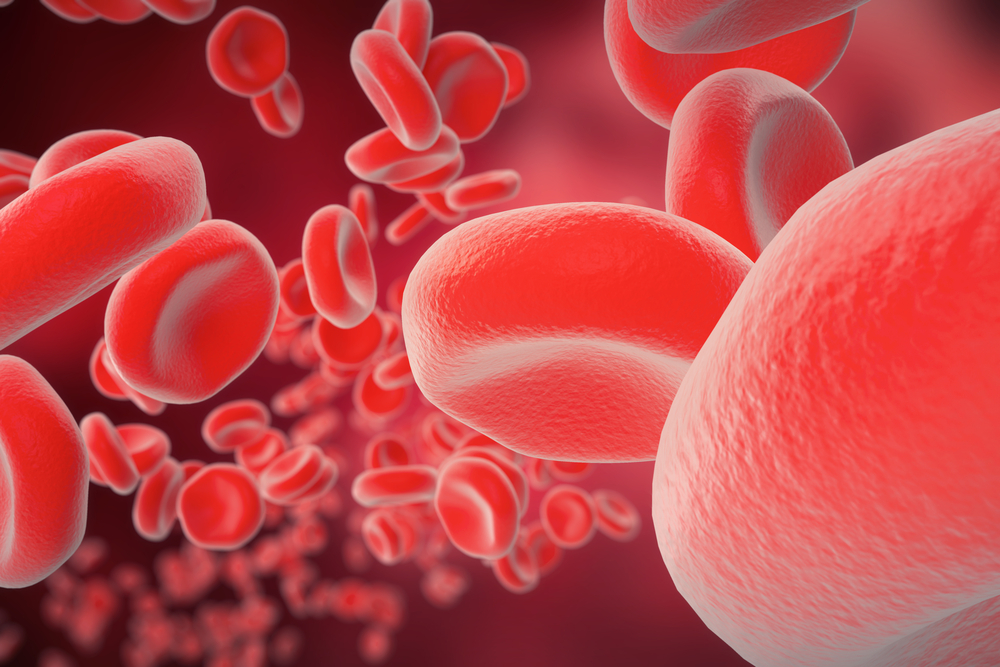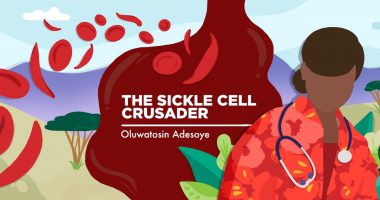HOPE Trial Shows Voxelotor May Increase Hemoglobin, Reduce Anemia in Adults and Adolescents With SCD

Treatment with voxelotor, Global Blood Therapeutics’ lead therapy candidate, can markedly reduce both hemolysis — the destruction of red blood cells — and anemia in adolescents and adults with sickle cell disease (SCD), results from the Phase 3 HOPE trial show. Voxelotor also was found to significantly increase the amount of hemoglobin in people with SCD.
HOPE’s latest data was discussed at the 24th European Hematology Association (EHA) Congress, held recently in Amsterdam, during an oral presentation titled “Results from the Randomized Placebo-Controlled Phase 3 Hope Trial of Voxelotor in Adults and Adolescents with Sickle Cell Disease.”
This 24-week data from the HOPE trial also were described in a study, “A Phase 3 Randomized Trial of Voxelotor in Sickle Cell Disease,” published in The New England Journal of Medicine.
The ongoing, double-blind HOPE trial (NCT03036813) was designed to evaluate the effectiveness and safety of once-daily treatment with voxelotor in sickle cell patients ages 12 to 65.
A total 274 participants were enrolled at 60 institutions across 12 countries, and were randomly assigned to take 1500 mg or 900 mg per day of voxelotor or a non-active placebo, for at least 24 weeks.
Preliminary data had shown that once-daily treatment with voxelotor effectively increased the amount of hemoglobin in about 58% of the SCD patients in just 12 weeks. Now, data collected at 24 weeks further demonstrates that the investigational therapy can induce robust and sustained improvements in the amount of healthy, circulating red blood cells, the researchers said.
The highest dose of voxelotor tested led to significant reductions, in comparison to before therapy, on the mean levels of reticulocytes (immature red blood cells) and bilirubin — two biomarkers of blood cells damage. The reticulocytes level was reduced by 19.9%, while the bilirubin levels dropped by 29.1%, the data show.
Also, treatment with the higher or lower dose of voxelotor increased the amount of hemoglobin in a total of 74 (48.4%) patients compared with 7 (9%) in the placebo-treated group. Voxelotor increased hemoglobin levels, at 24 weeks, to a mean of 9.8 g/dL with the highest dose, and 8.9 g/dl with the lowest dose. The baseline values, or those at the start of the study, were 8.6 g/dL for the higher-dose patients, and 8.3 g/dL for those with the lower dose.
The therapy’s positive effects were seen regardless of concurrent standard treatment with hydroxyurea, a medicine used to reduce the frequency of pain crises and the need for blood transfusions in sickle cell patients.
The HOPE results are consistent with a clinically meaningful effect of voxelotor on improving anemia in people with sickle cell disease, the researchers sad.
“Given the observed ability of voxelotor to reduce anemia, hemolysis and red blood cell sickling, as well as a favorable safety profile, I am confident that voxelotor could potentially become a new standard-of-care for treating adolescents and adults with SCD,” Jo Howard, MB BChir, MRCP, FRCPath, of Guy’s and St. Thomas’ NHS Foundation Trust and King’s College London, and a HOPE study investigator, said in a press release.
Treatment with the investigational therapy also showed a positive effect on preventing the incidence of painful vaso-occlusive crisis over time, as compared with placebo, the results showed.
In general, voxelotor was safe and well-tolerated, with both doses showing similar safety profiles. Treatment discontinuation rates did not differ substantially among the three trial groups, and neither treatment dose had an impact on tissue oxygenation.
HOPE trial data will be used as the basis for GBT’s planned New Drug Application for voxelotor with the U.S. Food and Drug Administration (FDA), said Ted W. Love, MD, president and CEO of GBT. The company expects to submit that application in the second half of 2019 for “review under an accelerated approval pathway,” Love said.
“We are excited about the potential for voxelotor to improve the major morbid outcomes for people with SCD, given that lower levels of hemoglobin are associated with greater risk of overt stroke, silent infarct and increased mortality,” he said. “We are also pleased to announce that we have reached final agreement with the FDA on the design of our transcranial doppler post-approval confirmatory study.”
Researchers also revealed the latest data collected in the ongoing Phase 2a HOPE-KIDS 1 trial (NCT02850406) on voxelotor at the EHA Congress. Data from that trial was presented in a poster, “Cerebral Blood Flow in Adolescents with Sickle Cell Anemia Receiving Voxelotor.”
Preliminary trial data suggests that voxelotor can sustain or improve oxygen delivery to the brain. It also was found to reduce cerebral blood flow and increase the levels of hemoglobin.
Voxelotor, formerly known as GBT440, is designed as an oral, once-daily therapy for SCD. It is intended to increase hemoglobins’ affinity for oxygen, which, when bound, will prevent the aggregation, or clumping, of hemoglobins, and the resulting sickling of red blood cells.
The FDA granted the treatment breakthrough therapy designation in January 2018. It had previously been granted fast track, orphan drug, and rare pediatric disease designations as a potential sickle cell treatment. The European Medicines Agency also has included volexotor in its Priority Medicines (PRIME) program.






